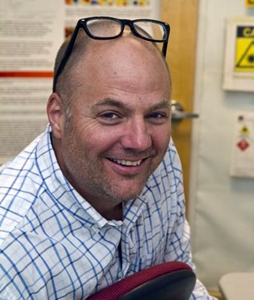7 March 2014. Biomedical engineers at Harvard University proposed a scheme for assessing the quality of stem cells used in drug testing to assure they transform into the cells and tissue they purport to represent. The team from Harvard’s Disease Biophysics Group, led by Kevin it Parker, published its findings online yesterday in the journal Stem Cell Reports.
Stem cells are quickly becoming a vital tool in medical research and practice, particularly for regenerative medicine and screening compounds for potential effects in humans. As their use has expanded, an industry has grown up to make stem cells commercially available for these purposes. So far, only the U.S. Food and Drug Administration proposed standards for stem cells, which are aimed at providing greater safety for patients receiving stem cell therapies.
Standards for stem cells used in drug screening, however, have not yet been proposed. Parker and colleagues note that screening drugs for potential adverse effects on the heart, a major use of commercial stem cells, brought more companies into the market. In a university statement, Parker says he and graduate student Sean Sheehy (also the first author of the paper) visited many of these companies, but “I’d never seen a dedicated quality-control department, never saw a separate effort for quality control.”
Parker adds when he ask the companies for samples of their stem cells, “Some we got were so bad we couldn’t even get a baseline curve on them; we couldn’t even do a calibration on them.” The quality of human stem cells varied to such an extent, the team had to rely on mouse stem cells to conduct a scientifically accurate study.
The company Axiogenesis AG in Cologne, Germany provided the mouse cardiac progenitor cells for their research. Axiogenesis donated both embryonic stem cells and heart muscle cells derived from induced pluripotent stem cells, adult cells that have been genetically reprogrammed to an embryonic stem cell-like state. While not human stem cells, the commercial mouse stem cells provided enough consistent quality to connect the stem cells to various types and functions of mouse heart tissue.
Sheehy, Parker, and colleagues started with more than 1,000 possible factors for evaluating stem cells and eventually winnowed them down to a core group of 64 variables. Based on these variables, the team constructed a quality index that made it possible to connect stem-cell properties to the form, structure, gene expression activity, electrical characteristics, and contraction behavior of different types of heart tissue.
The index offers a way, say the authors, for drug screeners to identify the best commercial stem-cell lines for their tests, as well as provide the industry with a quality system that provides customers with the assurance that they are getting the stem cells they need.
Read more:
- Calif Stem Cell, UC Irvine Partner on Eye Transplant Tissue
- NIH Funding Micro-Sutures for Stem Cell Heart Muscle Repair
- Stem Cell Developer-Supplier Issues Initial Public Offering
- Stem Cells Generate High-Quality Liver Cells for Drug Tests
- University, Biotech Develop Heart Tissue Repair Patch
* * *


 RSS - Posts
RSS - Posts
You must be logged in to post a comment.